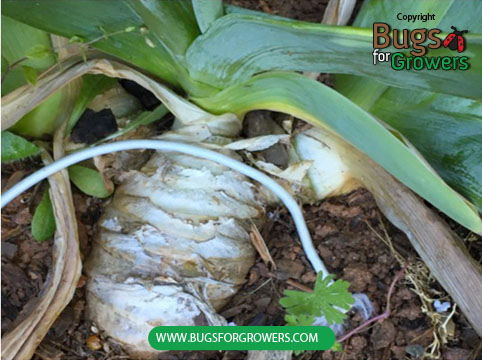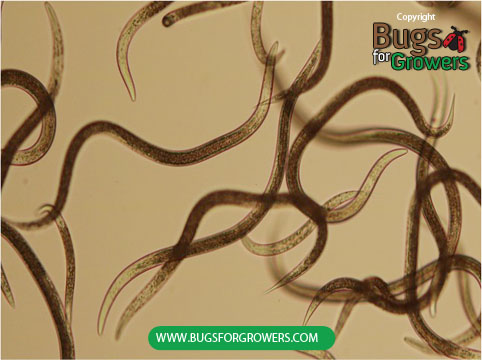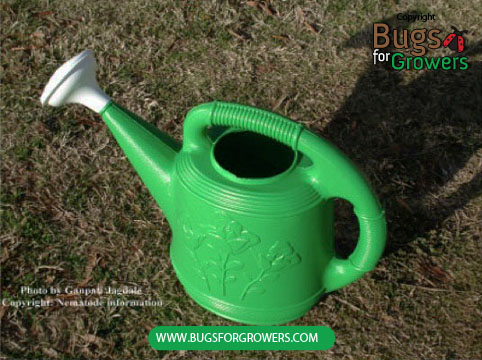Iris borer identification
Iris borers (Macronoctua onusta) are lepidopterous insects that cause damage to all types of iris including a variety called Northern blue flag (Photo 1). Life cycle of the iris borer contains four developmental stages including eggs, larvae, pupae and adult moths. Moths have forewings with purple scales and zigzag lines and hind-wings are yellowish in color. Moths of iris borers emerge from pupae in September through October.
Female moths lay eggs on dried leaves of iris as an overwintering stage. Early in the spring, eggs hatch into young larvae, These larvae start feeding on the young irish leaves and then slowly tunnel towards the crown and rhizomes (Photo 2).
Larvae keep feeding inside the rhizomes until they reach maturity. Matured larvae are pinkish white in color. Mature larvae tunnel into the soil for pupation in August and life cycle continues. Iris borers generally complete only one generation in a year.


Damage caused by Iris borers
Of the four stages of iris borer, only larval stages cause damage to iris rhizomes. After hatching from eggs young larvae start feeding on the young iris leaves and then slowly tunnel through leaves towards the crown and rhizomes.
Larvae keep feeding inside the rhizomes until they reach maturity. Due to damage caused by iris borers, rhizomes become susceptible to pathogenic bacteria called Erwinia carotovora that causes soft rot of rhizomes that in turn can kill iris plants.
Biological control
Beneficial entomopathogenic Steinernema carpocapsae nematodes (Photo 3) can be used to control only mature larvae and pupae of iris borers to stop their future generations. This is because all the young stages of iris borers feed internally on the leaf and rhizome tissues and therefore cannot be easily treated with beneficial nematodes as opposed to mature larvae and pupae that are present in the soil and can be easily treated with Steinernema carpocapsae nematodes.

For the effective control of iris borers, apply 25,000 Steinernema carpocapsae nematodes around iris plants in your flower garden using a watering can with a sprinkler head (Photo 4).
Apply nematodes early in the morning or late in the evening so that they will not be exposed to UV light as it kills them instantly. Since nematodes need a film of water for their movement in the soil, immediately irrigate all the nematode treated area.

